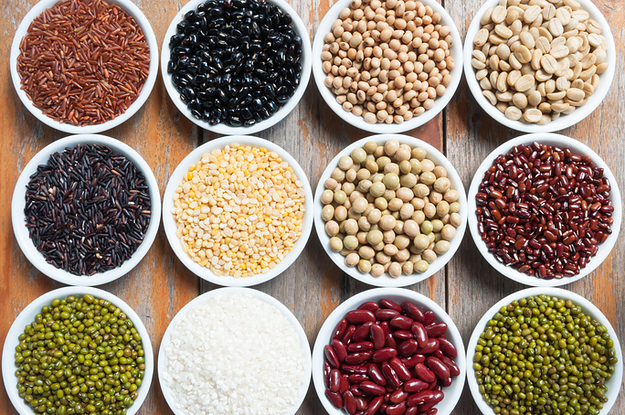Are Beans The Same As Legumes?

Understanding the diversity of plant-based foods can be both fascinating and complex. Among the many classifications of these foods, beans and legumes play a significant role in diets worldwide, often being used interchangeably in casual conversation. However, while beans are indeed a type of legume, the terms are not synonymous. This article explores the relationship between beans and legumes, shedding light on their differences, nutritional benefits, and culinary uses.
Quick Info Table: Beans vs. Legumes
| Feature | Beans | Legumes |
|---|---|---|
| Definition | Specific type of legume | Family of plants including various types |
| Examples | Kidney beans, black beans, pinto beans | Lentils, chickpeas, peas, peanuts |
| Nutritional Value | High in protein and fiber | Rich in protein, fiber, vitamins, and minerals |
| Culinary Uses | Salads, soups, stews, and sides | Dishes, spreads, snacks, and salads |
| Preparation Time | Varies (canned vs. dried) | Generally quick-cooking (like lentils) |
Understanding Legumes
What Are Legumes?
Legumes are a broad category of plants in the family Fabaceae. This family encompasses a diverse range of species that produce pods containing seeds. The term "legume" refers not only to the seeds themselves but also to the plants that bear them. Common examples include lentils, chickpeas, peas, and soybeans.
Nutritional Profile of Legumes
Legumes are renowned for their high nutritional value. They are rich in:
- Protein: Essential for muscle repair and growth.
- Dietary Fiber: Important for digestive health.
- Vitamins and Minerals: Such as iron, potassium, magnesium, and folate, which contribute to overall health.
Furthermore, legumes are low in fat, making them an excellent option for those looking to maintain a healthy diet while ensuring they receive essential nutrients.
Culinary Applications of Legumes
Legumes are incredibly versatile in the kitchen. They can be used in a variety of dishes, including:
- Soups and Stews: For added protein and texture.
- Salads: As a nutritious topping or base ingredient.
- Spreads: Such as hummus made from chickpeas.
- Snacks: Roasted peas or lentils for a healthy munch.
Exploring Beans
What Are Beans?
Beans are a subset of legumes, representing specific types of seeds from various plants within the legume family. They come in numerous varieties, each with unique flavors, textures, and uses. Some of the most popular types of beans include:
- Kidney Beans: Often used in chili.
- Black Beans: Common in Latin American cuisine.
- Pinto Beans: Frequently found in refried beans.
Nutritional Benefits of Beans
Beans offer a plethora of health benefits, including:
- High Protein Content: Making them an excellent meat substitute for vegetarians.
- Fiber-Rich: Beneficial for heart health and digestion.
- Antioxidants: Some beans, like black beans, are rich in antioxidants, which help combat oxidative stress in the body.
Culinary Uses of Beans
Beans are a staple in many cultures and cuisines. They can be found in:
- Chili: A hearty dish that showcases the robust flavors of beans.
- Salads: Adding protein and fiber to a fresh mix.
- Dips: Like bean dip, perfect for parties and gatherings.
- Side Dishes: Such as baked beans, which are popular at barbecues.
Distinguishing Features: Beans vs. Legumes
Common Misconceptions
While all beans are legumes, not all legumes are beans. This distinction is crucial for understanding the broader context of plant-based nutrition. For instance, when someone refers to legumes, they might be talking about lentils or chickpeas, which are not classified as beans.
Varieties within Legumes
The legume family includes a wide array of plants beyond just beans. This diversity means that when discussing legumes, one is also considering:
- Peas: Often used in soups or as a side vegetable.
- Lentils: Known for their quick cooking time and high protein content.
- Peanuts: Technically a legume, used widely as a snack or ingredient.
Nutritional Comparison
Beans vs. Other Legumes
While beans provide excellent nutritional value, other legumes might offer different benefits. For example, lentils cook faster and are often easier to digest, making them a preferred choice for some.
Similarities
Both beans and other legumes share similarities in their nutritional profiles:
- High fiber content supports digestive health.
- Rich in plant-based protein, making them ideal for vegetarian and vegan diets.
- Contain essential vitamins and minerals that contribute to overall wellness.
Differences
However, there are notable differences:
- Beans often have a firmer texture compared to lentils.
- Some beans require longer cooking times, especially when dried.
- The flavor profiles can vary significantly, impacting culinary uses.
Conclusion
In conclusion, while beans are indeed a type of legume, the two terms are not interchangeable. Understanding their distinctions enriches our knowledge of plant-based foods and their role in our diets. Both beans and legumes offer substantial health benefits, from high protein content to essential vitamins and minerals.
Incorporating a variety of legumes, including beans, into your meals can enhance your nutrition and culinary experiences. As you explore these foods, consider their versatility and the many delicious dishes you can create. Whether you choose beans for a hearty chili or lentils for a quick salad, embracing legumes can lead to a healthier and more flavorful diet.



Comments ()